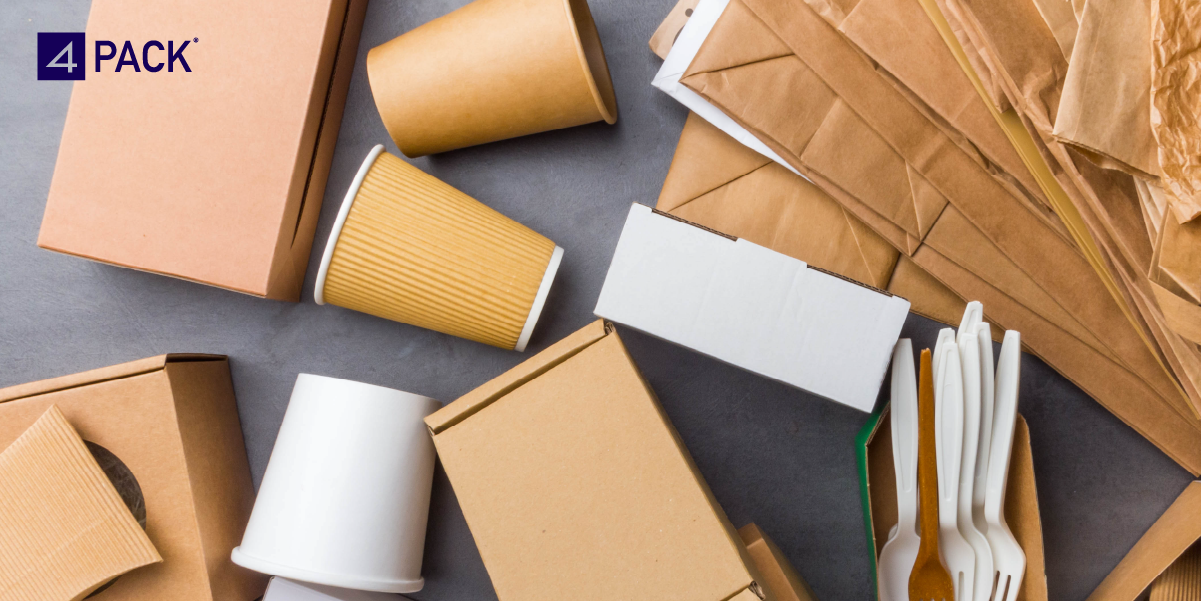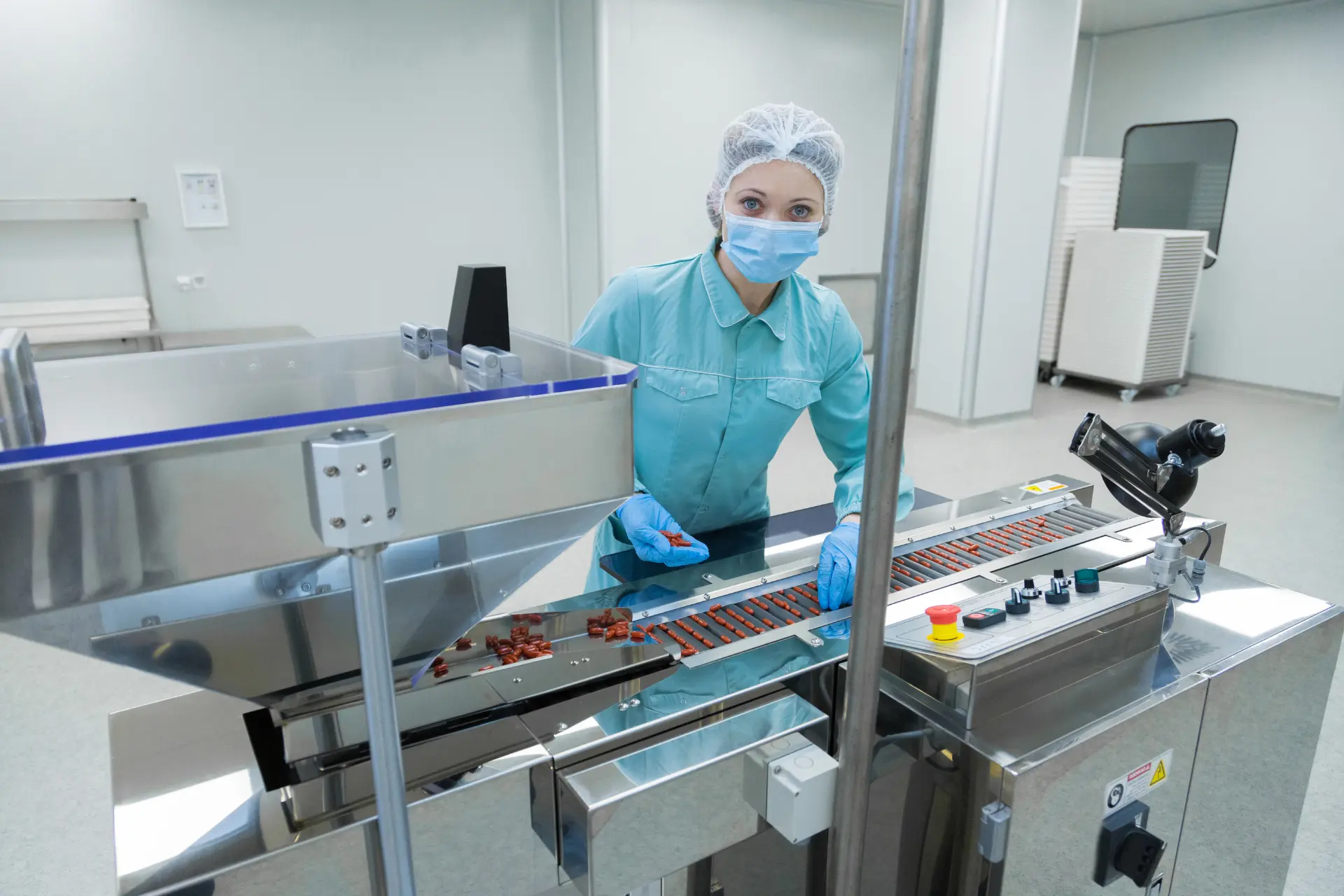Introduction
The intersection of packaging and sustainability has become a focal point for manufacturers worldwide. With increasing environmental concerns and stringent regulations, understanding and implementing sustainable packaging practices are no longer optional but imperative for manufacturers. This article aims to provide manufacturers with a comprehensive overview of the key considerations and responsibilities associated with sustainable packaging.
1. The Importance of Sustainable Packaging for Manufacturers
Why Manufacturers Must Prioritise Sustainable Packaging
Manufacturers play a pivotal role in the lifecycle of packaging, from design and production to distribution and disposal. Embracing sustainable packaging practices is crucial for reducing environmental impact and meeting regulatory obligations. Moreover, adopting sustainable packaging can enhance brand reputation, foster consumer trust, and drive long-term business success.
Manufacturers must recognise the environmental impact of packaging materials and processes. By prioritising sustainable alternatives, such as recyclable or biodegradable materials, manufacturers can minimise their carbon footprint and contribute to a healthier planet. Additionally, compliance with governmental regulations and industry standards is essential to avoid penalties and maintain credibility.
Enhancing Brand Reputation and Consumer Trust
Consumers are increasingly conscious of environmental issues and expect brands to demonstrate commitment to sustainability. Manufacturers that prioritise sustainable packaging not only reduce their environmental footprint but also resonate with eco-conscious consumers. By aligning with consumer values, manufacturers can strengthen brand reputation, build trust, and foster loyalty among consumers.
2. Trends Driving Sustainable Packaging in Manufacturing
Responding to Market Demands and Regulatory Pressures
The shift towards sustainable packaging is driven by a combination of market demands and regulatory pressures. Consumers are actively seeking eco-friendly products, prompting manufacturers to adopt sustainable packaging solutions to remain competitive. Additionally, governmental regulations and industry initiatives are pushing manufacturers towards greater sustainability to mitigate environmental impact and address waste management challenges.
Manufacturers are increasingly turning to eco-friendly materials and processes to reduce their environmental footprint. From biodegradable plastics to renewable resources like paper and bamboo, a wide range of sustainable alternatives is available to manufacturers. By incorporating these materials into packaging designs, manufacturers can reduce reliance on non-renewable resources and minimise environmental harm.
Embracing Innovation to Meet Sustainability Goals
Innovation plays a crucial role in driving sustainability in manufacturing. Advancements in material science, packaging technologies, and supply chain optimisation enable manufacturers to develop innovative solutions that align with sustainability goals. By embracing innovation, manufacturers can overcome challenges and seize opportunities to enhance sustainability throughout the packaging lifecycle.
3. Regulations and Standards: Navigating Compliance
Manufacturers’ Role in Ensuring Compliance
Compliance with packaging regulations and standards is paramount for manufacturers to operate ethically and sustainably. Manufacturers must stay informed about governmental regulations, such as packaging waste directives and recycling targets, to ensure legal compliance. Additionally, adherence to industry standards and certifications, such as ISO 14001 for environmental management systems, demonstrates a commitment to sustainability and responsible business practices.
Government regulations governing packaging vary by region and can encompass aspects such as material restrictions, recycling requirements, and extended producer responsibility (EPR) schemes. Manufacturers must familiarise themselves with these regulations and ensure that their packaging designs and practices comply with legal requirements. Furthermore, industry standards and certifications provide guidelines and benchmarks for sustainable packaging practices, enabling manufacturers to measure and improve their environmental performance.
Implementing Robust Compliance Strategies Across the Supply Chain
Achieving compliance with packaging regulations requires a collaborative approach across the supply chain. Manufacturers must work closely with suppliers, distributors, and retailers to ensure that packaging materials and processes meet regulatory requirements. By implementing robust compliance strategies and fostering transparency in the supply chain, manufacturers can mitigate risks and build trust with stakeholders while advancing sustainability objectives.
4. Lifecycle Analysis: Assessing Environmental Footprint
Manufacturers’ Responsibility in Lifecycle Analysis
Understanding the environmental impact of packaging requires a comprehensive lifecycle analysis. Manufacturers must assess the entire lifecycle of packaging, from raw material extraction and production to distribution, use, and disposal. By conducting lifecycle analyses, manufacturers can identify hotspots of environmental impact and opportunities for improvement throughout the packaging lifecycle.
Lifecycle analyses enable manufacturers to quantify the environmental impact of packaging across different stages of its lifecycle. This includes assessing factors such as greenhouse gas emissions, energy consumption, water usage, and waste generation associated with packaging materials and processes. By evaluating environmental impacts holistically, manufacturers can make informed decisions to minimise their ecological footprint and maximise sustainability.
Identifying Opportunities for Improvement and Optimisation
Lifecycle analyses not only highlight environmental challenges but also identify opportunities for improvement and optimisation. Manufacturers can explore alternative materials, design options, and production processes to enhance sustainability throughout the packaging lifecycle. By prioritising interventions that yield the greatest environmental benefits, manufacturers can drive continuous improvement and achieve meaningful reductions in their environmental footprint.
5. Innovations in Sustainable Packaging: Meeting Manufacturer Needs
Leveraging Innovative Solutions to Achieve Sustainability Goals
Innovation is instrumental in advancing sustainable packaging practices and meeting manufacturer needs. Manufacturers can leverage innovative solutions to address sustainability challenges while meeting functional and aesthetic requirements. Whether through the development of bio-based plastics, recyclable materials, or smart packaging technologies, innovation enables manufacturers to push the boundaries of sustainability and drive positive change.
Material science and packaging technologies continue to evolve, offering manufacturers new opportunities to enhance sustainability. From bio-based polymers derived from renewable sources to advanced recycling technologies that close the loop on plastic waste, manufacturers have access to a diverse range of innovative solutions. By staying abreast of technological developments, manufacturers can integrate cutting-edge solutions into their packaging designs and processes.
Tailoring Solutions to Fit Manufacturing Processes and Requirements
While innovation drives progress in sustainable packaging, manufacturers must ensure that solutions align with their specific manufacturing processes and requirements. Sustainable packaging solutions should be scalable, cost-effective, and compatible with existing equipment and infrastructure. By tailoring solutions to fit manufacturing needs, manufacturers can overcome implementation barriers and realise the full potential of sustainable packaging innovation.
6. Consumer Awareness and Behaviour: Shaping Manufacturing Practices
Manufacturers’ Role in Responding to Consumer Demand
Consumer awareness and preferences play a significant role in shaping manufacturing practices and driving demand for sustainable packaging. Manufacturers must understand evolving consumer expectations and respond proactively to demand for eco-friendly products and packaging. By prioritising sustainability in product development and packaging design, manufacturers can capitalise on consumer trends and enhance brand loyalty.
Consumers are increasingly seeking products that align with their values, including environmental sustainability. Surveys consistently show that a majority of consumers prefer products with eco-friendly packaging and are willing to pay a premium for sustainable options. Manufacturers that prioritise sustainable packaging not only meet consumer expectations but also differentiate themselves in the marketplace and gain a competitive edge.
Communicating Sustainability Efforts to Build Trust
Transparency and communication are essential for manufacturers to build trust with consumers and demonstrate their commitment to sustainability. Manufacturers should clearly communicate their sustainability efforts, from sourcing eco-friendly materials to implementing recycling initiatives, through product labelling, marketing campaigns, and corporate communications. By engaging with consumers openly and honestly, manufacturers can foster trust and loyalty while driving demand for sustainable products.
7. Cost Considerations: Balancing Sustainability and Profitability
Strategic Approaches to Managing Costs and Benefits
Balancing sustainability with profitability is a key challenge for manufacturers seeking to adopt sustainable packaging practices. While sustainable packaging solutions may entail higher upfront costs, they offer long-term benefits in terms of environmental stewardship, brand reputation, and operational efficiency. Manufacturers must adopt strategic approaches to manage costs and maximise the value proposition of sustainable packaging investments.
Sustainable packaging investments should be viewed as strategic initiatives that generate long-term value for manufacturers. By investing in sustainable practices, manufacturers can realise cost savings through reduced material consumption, improved operational efficiency, and enhanced brand equity. Additionally, proactive investment in sustainability helps future-proof manufacturing operations against regulatory changes and consumer preferences.
Identifying Cost-Saving Opportunities Through Sustainable Innovations
Contrary to conventional wisdom, sustainable packaging can offer cost-saving opportunities for manufacturers. Innovations such as lightweighting, optimised packaging design, and closed-loop recycling systems can yield significant cost reductions over time. Manufacturers should leverage these opportunities to enhance sustainability while improving their bottom line, demonstrating that environmental responsibility and economic viability are not mutually exclusive.
8. Collaboration Across the Supply Chain: Driving Collective Action
Manufacturers’ Engagement in Collaborative Efforts
Collaboration across the supply chain is essential for driving collective action and advancing sustainability goals. Manufacturers must actively engage with suppliers, distributors, retailers, and other stakeholders to promote collaboration and knowledge sharing. By working together, stakeholders can identify opportunities for collective action, address common challenges, and drive meaningful progress towards a more sustainable future.
Manufacturers rely on a network of suppliers, distributors, and retailers to bring products to market. Collaboration with these partners is critical for integrating sustainability throughout the supply chain. Manufacturers should work closely with suppliers to source sustainable materials and collaborate with distributors and retailers to optimise packaging design and logistics. By fostering strong partnerships, manufacturers can amplify their impact and drive positive change across the entire value chain.
Sharing Best Practices and Promoting Industry-wide Sustainability Initiatives
Sharing best practices and promoting industry-wide sustainability initiatives are key strategies for driving collective action. Manufacturers should actively participate in industry associations, working groups, and collaborative platforms dedicated to sustainable packaging. By sharing knowledge, experiences, and resources, manufacturers can inspire and empower others to adopt sustainable practices and accelerate progress towards shared sustainability goals.
9. Case Studies and Success Stories: Learning from Industry Leaders
Manufacturers Driving Change Through Sustainable Practices
Real-world examples of manufacturers successfully implementing sustainable packaging practices provide valuable insights and inspiration for industry peers. Case studies and success stories showcase innovative approaches, best practices, and tangible results achieved by leading manufacturers. By learning from industry leaders, manufacturers can gain practical knowledge and guidance to inform their own sustainability initiatives and drive continuous improvement.
Case studies highlight the diverse range of sustainable packaging solutions and their positive impact on environmental, social, and economic outcomes. From reducing plastic waste and carbon emissions to enhancing product safety and brand reputation, sustainable packaging initiatives deliver measurable benefits for manufacturers and society. By showcasing successful implementations, manufacturers can inspire others to take action and replicate their success.
Drawing Insights from Real-World Examples to Inform Decision-Making
Case studies offer valuable insights into the challenges, opportunities, and lessons learned from implementing sustainable packaging practices. Manufacturers can draw upon these insights to inform decision-making, identify strategies for overcoming barriers, and avoid common pitfalls. By leveraging real-world examples, manufacturers can navigate the complexities of sustainable packaging with confidence and drive meaningful change within their organisations.
10. Future Outlook and Challenges: Navigating the Road Ahead
Anticipating Future Trends and Challenges
The future of sustainable packaging holds both opportunities and challenges for manufacturers. Anticipating future trends, such as advancements in material science, circular economy initiatives, and evolving consumer preferences, is critical for staying ahead of the curve. Manufacturers must proactively adapt to changing market dynamics and regulatory landscapes to remain competitive and resilient in the face of uncertainty.
Regulatory frameworks governing packaging and sustainability are expected to evolve in response to environmental concerns and societal pressures. Manufacturers must stay abreast of regulatory changes and proactively adjust their strategies and operations to ensure compliance. Additionally, meeting evolving consumer expectations for sustainable products and packaging requires continuous innovation and engagement with stakeholders.
Overcoming Barriers to Sustainable Packaging Adoption in Manufacturing
While the benefits of sustainable packaging are clear, adoption can be hindered by various barriers, including cost constraints, technological limitations, and resistance to change. Manufacturers must address these barriers systematically by investing in research and development, collaborating with industry partners, and educating stakeholders. By overcoming barriers to adoption, manufacturers can unlock the full potential of sustainable packaging and drive positive change at scale.
Summary
Sustainable packaging is no longer a choice but a responsibility for manufacturers seeking to thrive in a rapidly changing world. By prioritising sustainability, manufacturers can reduce their environmental footprint, enhance brand reputation, and drive long-term business success. Through collaboration, innovation, and strategic decision-making, manufacturers can navigate the complexities of sustainable packaging and emerge as leaders in creating a more sustainable future for generations to come.



